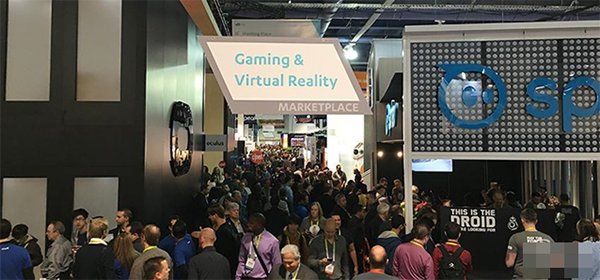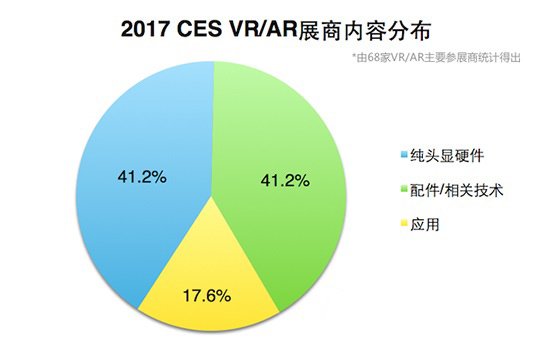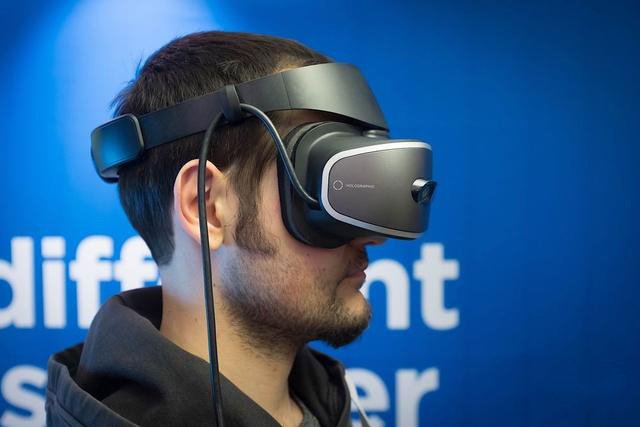CES 2017 VR Industry Chills: Exhibitors Double, Giants Aphasia
With the launch of CES (United States International Consumer Electronics Show) in 2017, the annual global science and technology grand ceremony has gradually appeared in front of everyone. Although the total number of VR exhibitors at CES reached more than 70 at this year's CES, there are more than 20 AR exhibitors, more than 40 times the total number of VR/ARs last year; however, with the fierce competition last year, the occupation of Las Vegas is fierce. Different scenarios, this year's virtual reality booth was significantly more than half of last year.


Last year compared to this year's CES VR show crowds
While the public’s enthusiasm has diminished, exhibitors have also kept a low profile. Last year, Oculus, HTC Vive, and Sony all introduced new consumer versions of VR headsets. At this year's CES, Oculus, Samsung, and Sony all had no VR movements. HTC also sent only two peripheral accessories. Some VR parties performed last year. Too high, this year shows the meaning of some hangovers and fatigue.
Collective aphasia of VR giant
In this virtual reality exhibition hall, the most striking change is the absence of VR star company Oculus. As one of the most attention-grabbing companies in the CES Virtual Reality Pavilion over the years, it can even be called the first person to take the VR wave. The products that Oculus launched at the beginning of each year at CES are indicative of the VR hardware industry in the next year. Development trends. Oculus's absence this year disappoints consumers and seems to herald the dim opening of the VR industry in 2017.
Sony, which is also one of the three giants of VR headsets, has neither launched a new PSVR nor brought rumored "AR glasses" this year. It only announced that as of January 1, 2017, the total sales volume of PS4 was 53.4 million. station. While Samsung Gear, the leader in the field of mobile heads and backed by Oculus, showed a fairly satisfactory number of Gear VR 5 million units, it did not launch any VR hardware on this basis. In October last year, Microsoft's initial launch of the VR headset (without publishing parameters) did not participate. In addition, many old friends at CES are also difficult to trace, such as once the explosion of fire for 3 years, but in December last year, the center of gravity will be transferred to the B-side, crowdfunding VR treadmill omnibus, Omni, this year is not on display.
Another VR giant HTC Vive did not emphasize hardware upgrades at the CES conference, but began to announce the creation of a VR third-party ecosystem. This time, Vive has released two VR accessories, "tracker" and "listen to smart headband": They are a round accessory that can be installed on other accessories to create other VR peripherals; Functional adjustable headband. In addition, HTC Vive also announced the upcoming Viveport content subscription service. Vive officials stated that the purpose of the launch of these products is to help developers simplify prototype production, bring more controllers and accessories to consumers, and expand Vive's VR ecosystem.
In terms of AR, Magic Leap kept its mystery as always and did not participate in the exhibition. Meta and Microsoft HoloLens did not apply for their own booths. They only displayed a small number of booths on partners such as BMW.
The silence of giants was doubled by exhibitors: More than 40% of VR/AR exhibitors in this exhibition were in the field of pure AR/VR head-up display, among which mobile VR, AR glasses, and carton VR were equally divided; virtual reality accessories and related Technology manufacturers also accounted for more than 40%, of which mostly panoramic cameras, there are some wireless solutions, space positioning programs, as well as a small amount of eye tracking technology, flexible screen technology, and some novelties such as VR tactile feedback sandals, VR room projection Instrument and so on. In general, there is no special eye-catching product, the booth is no longer crowded, and the public’s enthusiasm is also reduced.

2017CES VR/AR Exhibitor Content Distribution
Chip makers' entry
At this CES, Intel showed its muscles with a pre-show conference with 250 sets of sofa soft seats with Oculus Rift and gaming notebooks. Intel's core product technology keywords at CES this year are smart travel, 5G and AI and VR/AR, and the Merged Reality (MR) Alloy helmet is one of Intel's most important projects in the field of virtual reality. However, Alloy MR helmet is a reference design, not Intel's product to be launched, its mode is a bit like "ultrabook", Intel gives a reference, other manufacturers can do commercial products, the goal is to promote the definition and scale of product form Commercialization, while selfishness is the application of Intel's own RealSense technology, processor and other core technologies to this new product form.
Qualcomm, which is also a chip maker, also introduced the Xiaolong 835 chip this year. The performance enhancement of this processor can be summarized as follows: Five key technical pillars supported by enhanced machine learning, including VR/AR Optimized support - support Google Daydream platform and Microsoft Holographic platform, 3D graphics rendering performance up to 25%, 60 times more color and so on. During the CES show, ODG has launched the first AR glasses equipped with Snapdragon 835 chips: R-8 and R-9.
Qualcomm also demonstrated two mobile VR headsets based on the Snapdragon 835 and an all-in-one prototype. It was reported that SMI eye tracking technology was used. Among them, the VR head is a separate type of mobile phone + box, which supports inside-out tracking; another prototype is relatively simple and still needs to be developed. However, according to the experience of the feedback, the delay of the two products still needs to be further optimized.
In addition to chip vendors, Lenovo, Dell and other computer manufacturers, Huawei, ZTE and other mobile phone manufacturers have also launched or equipped with Microsoft's Holographic platform VR head display, support for VR's new high-end computers, or to support the new features of Google Daydream platform Mobile phones, but not too eye-catching new products appear, Lenovo launched VR head display is only a prototype, and can not be used.

Lenovo VR head display
Conclusion: There is nothing more real than cold
HTC Vive, Sony PSVR, and Oculus have not announced sales yet. According to SteamSpy's sampling data for the “The Lab†pre-installed on the Steam platform for HTV Vive, HTC Vive sold about 400,000 units before the Christmas holidays. It is still far from the "VR burst" that people expected.
Compared with the VR scene at CES 2016, the 2017 Virtual Reality booth at CES can be considered a solid cold. Although the manufacturers have doubled, the virtual reality giants are not moving. The arrival of chip makers, computer makers, and mobile phone manufacturers can all be seen as an initial functional addition, and there is no action with too much volume.
At the same time, we also feel that the VR industry has begun to return to rationality and enter a more realistic development pace. Typical examples are the introduction of the Intel Alloy reference design standard products in the fourth quarter of this year, which gave a lot of manufacturers hardware standard gameplay; secondly, Gore is The representative ODM vendors have achieved phased results in the technology of VR integrated devices, helmets, and Vive-like host products. The VR hardware standardization and large-scale industrial chain foundation have been formed.
People often hailed the CES as "a ceremony for science and technology in the new year" and "a trend for science and technology". Then according to the low-key opening tempo of virtual reality at CES this year, the VR industry in 2017 began to hide its brilliance and enter a period of silence after the outbreak. Improve peripheral services and accumulate core technologies. Although AR and MR may have arisen, it will be the next topic we will discuss.
Product Name: Car Charger
Place of Origin: Guangdong, China (Mainland)
Brand Name: OEM
Output Type: DC
Connection: Other
Rated Voltage: 12V-24V
Working Temp: 0-55℃
Weight: 36g
Materials: PC+ABS
Color: White Black
Warranty: 1 year
Suitable for:Most digital devices
SMART PROTECTION & ATTRACTIVE DESIGN ------ Intelligent circuit design protects against short circuiting,over-heating,over-current,and over-charging. Charging stops when battery is full. Car charger with blue LED indicator,which makes it convenient to find exactly where the connection should go; And the light is soft enough not to distract at night.
Dual USB Car Charger Adapter,USB Smart Port Charger ,Car Charger,USB Car Charger For Phone
Shenzhen Waweis Technology Co., Ltd. , https://www.waweis.com